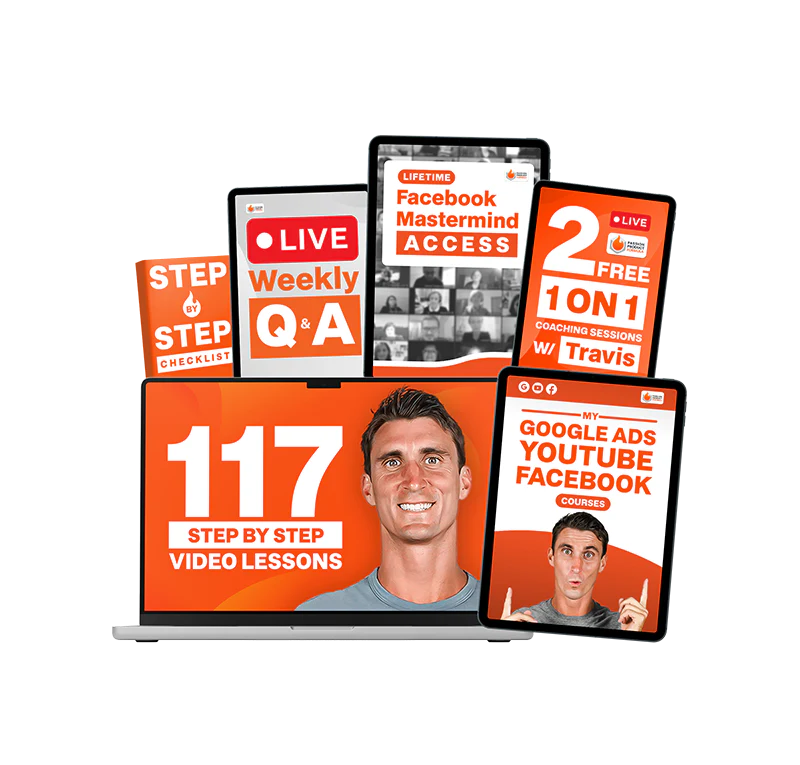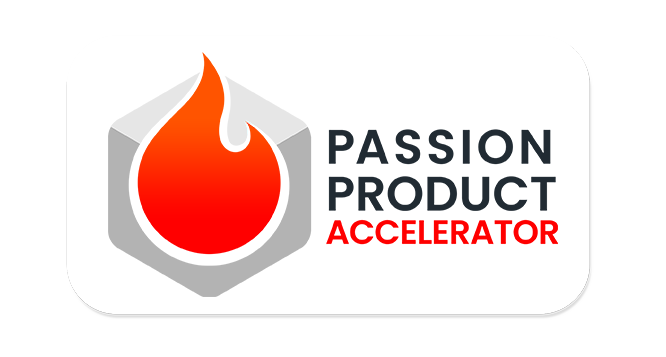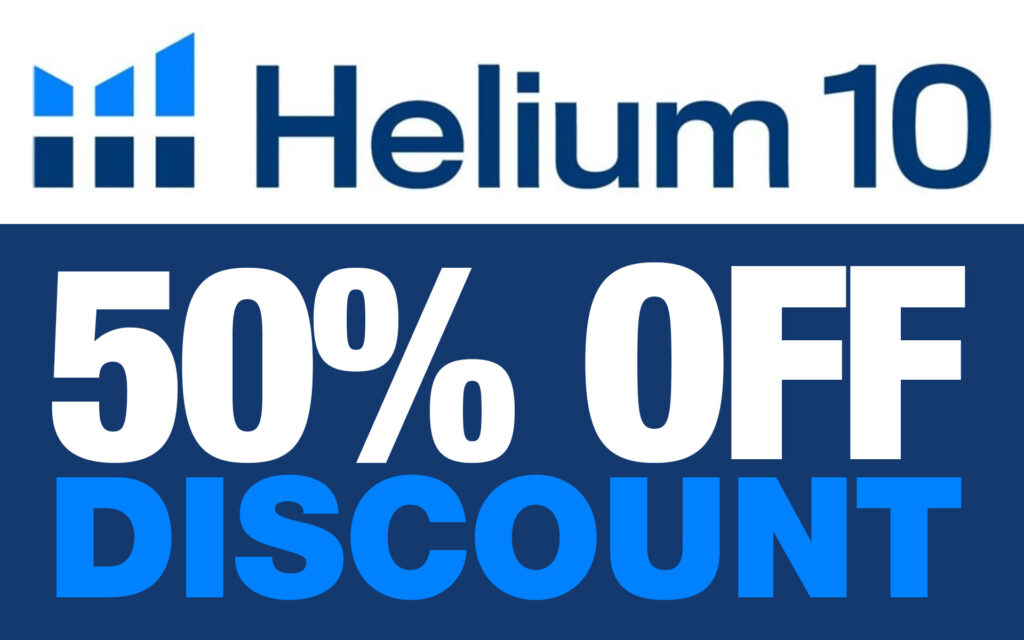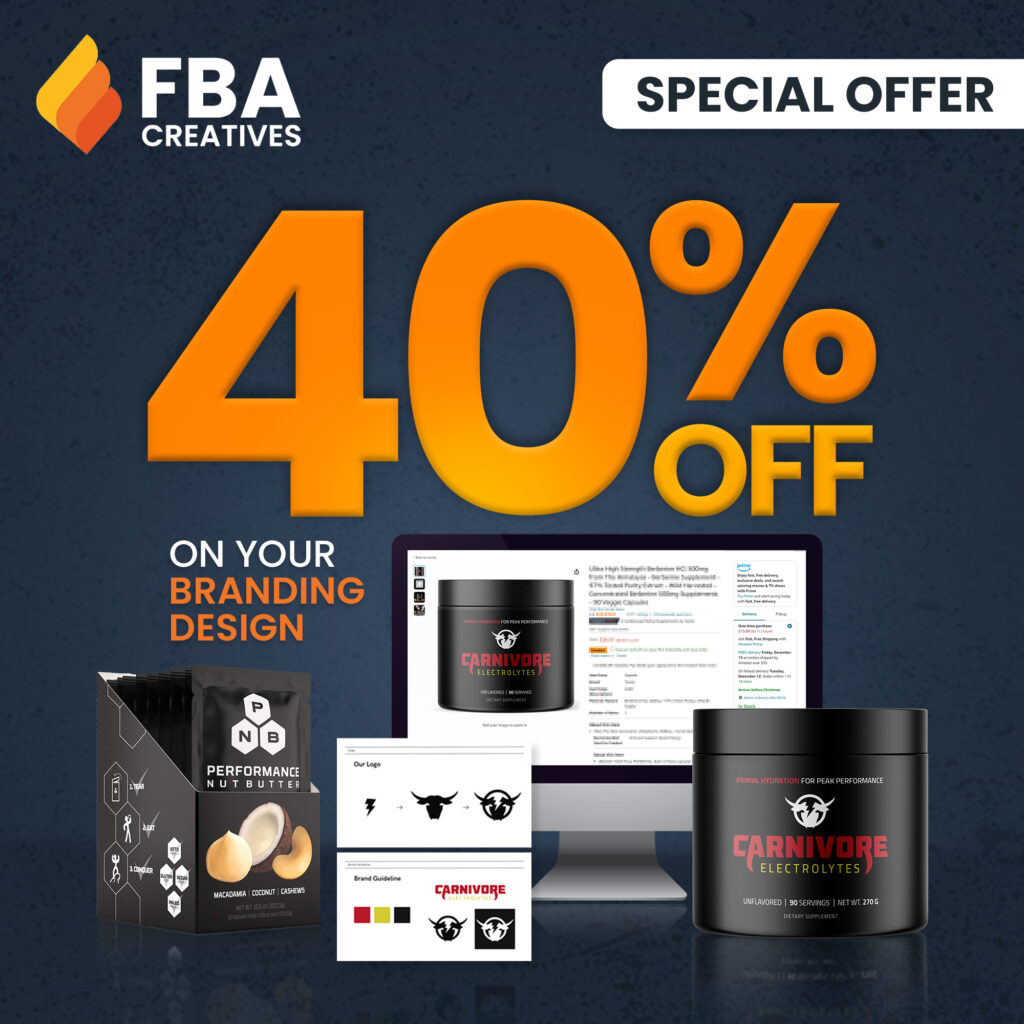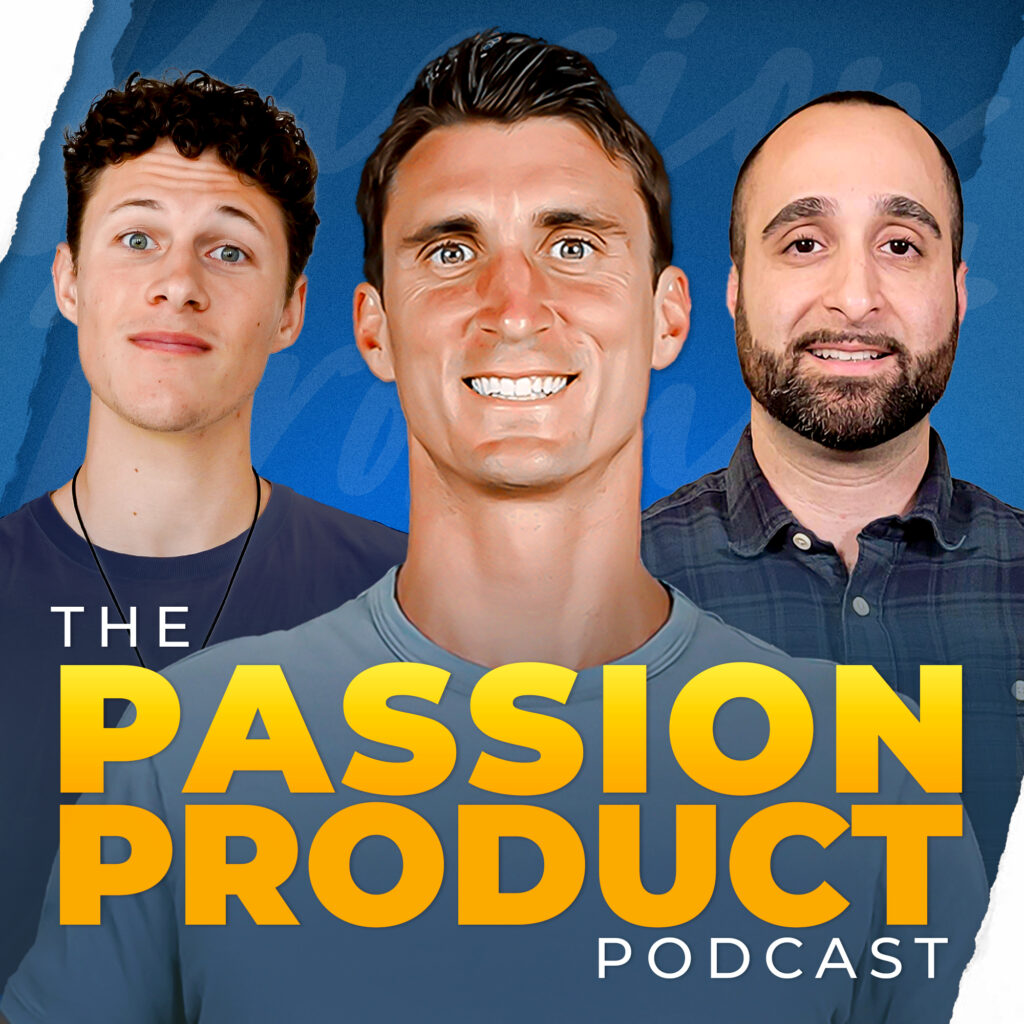Imagine turning your creative passion into a product that makes money—even while you sleep. That’s exactly what Brian, a former software engineer, managed to do. He transformed his love for board games into a thriving business—starting on Kickstarter and scaling it on Amazon FBA.
In this blog post, we’ll walk through Brian’s entire journey—from ideation to profit. You’ll discover how he validated his idea, handled manufacturing, managed logistics, and eventually found his way to Amazon. If you’re thinking of building your own physical product, this story is full of lessons. And when you’re ready to take action, the Passion Product Formula can help you turn your ideas into income with a step-by-step system designed to simplify and accelerate your product launch journey.

- From Corporate Burnout to Creative Breakthrough
- Validating the Idea with Kickstarter
- Smart Investments for Your Amazon FBA Product
- Finding Manufacturer for Your Amazon FBA Product
- From Kickstarter to Amazon FBA
- What Sales Look Like in Your First Year on Amazon FBA
- Learn From These Real Amazon FBA Mistakes
- How Organic Buzz Can Fuel Amazon FBA Sales
- Combining Kickstarter and Amazon FBA for Long-Term Growth
- How You Can Launch Your Own Product—Without Taking Huge Risks
- The Passion Product Formula – Your Shortcut to Success
- Turning Your Passion Into Profit
- Frequently Asked Questions (FAQs)
From Corporate Burnout to Creative Breakthrough
Every entrepreneurial story begins with a moment of realization—when comfort starts to feel like a cage. For Brian, this moment came after years of working a stable job that no longer inspired him. This section dives into the internal pivot that turned frustration into action and eventually into a thriving Amazon FBA business.
Why Brian Left His Job
Brian’s story begins in a familiar place—feeling stuck. Despite having a stable job as a software engineer, he found himself creatively drained. Coding for others’ dreams was no longer fulfilling. He felt a strong urge to take control of his time and pursue something that fed his passion.
How Board Games Became His Escape
Brian and his best friend had always loved games. They started with digital games, but constant tech updates made those projects obsolete. That’s when they pivoted to physical board games—products that don’t require constant patching and can deliver a timeless experience. That transition planted the seed for what would become a successful Amazon FBA journey.
Validating the Idea with Kickstarter
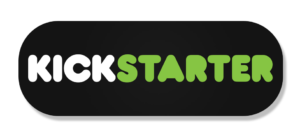
Before diving into production or listing on Amazon FBA, Brian made a smart move—he validated his board game idea on Kickstarter. This helped him prove demand, get funding, and build an early fan base that would later support sales on Amazon.
Why Kickstarter Was the First Step
Kickstarter offered Brian a low-risk way to test if people actually wanted his product. He didn’t need to guess—he let the market decide. With a history of launching 13 previous campaigns, he already knew the formula: involve your audience early, collect feedback, and deliver value from day one.
He used polls on Facebook, Discord, and Instagram to ask potential backers about mechanics, themes, and artwork. This collaborative approach created loyal fans who felt ownership in the product—making them more likely to support it again later on Amazon FBA.
Launching “Good Cop Bad Cop” – The Fourth Edition
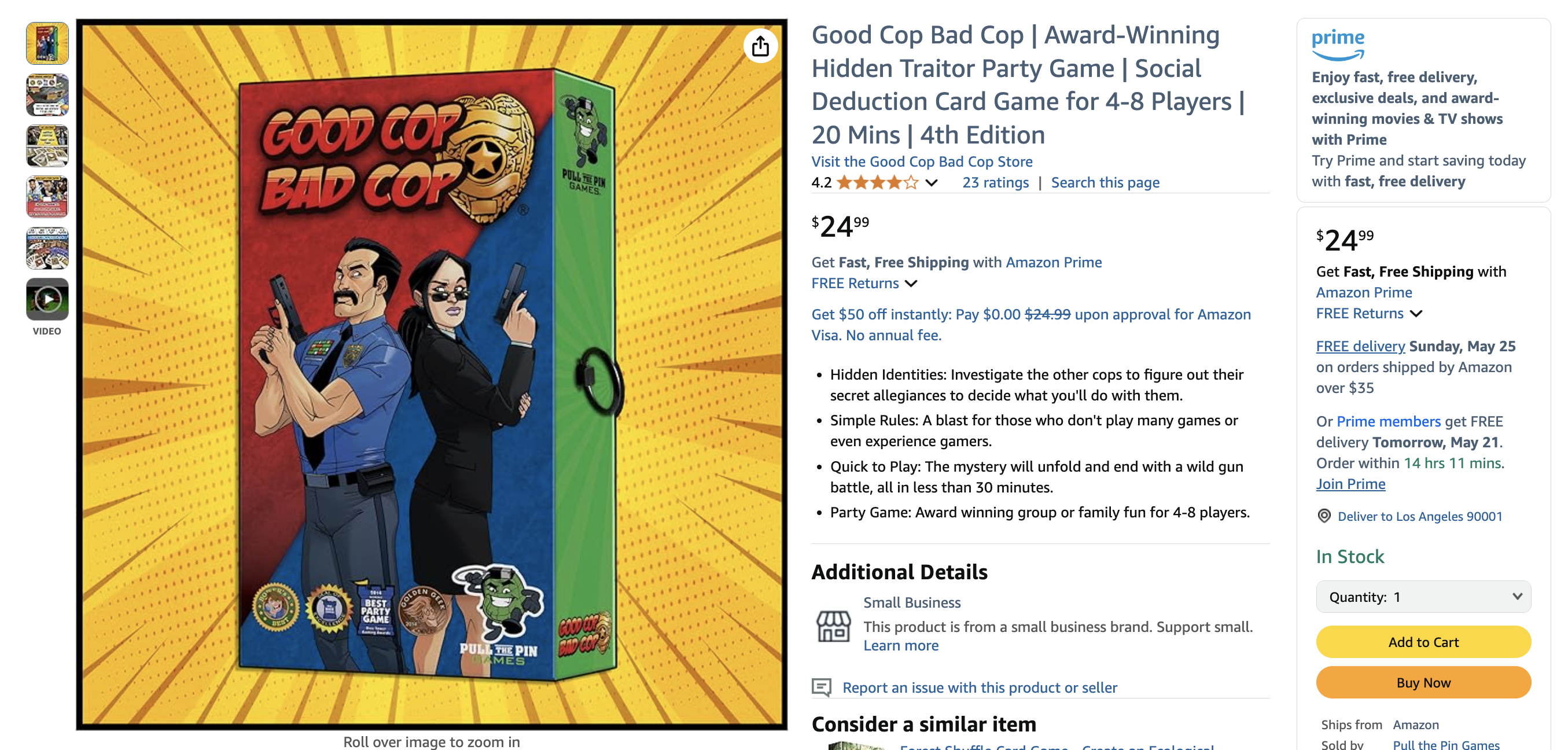
The fourth edition of Brian’s party game, Good Cop Bad Cop, came with a new expansion and exciting gameplay twists. They hired illustrators, developed emotional moments in the gameplay, and produced a high-quality campaign video to tell the product story.
The Kickstarter campaign raised over $14,000—proving strong product-market fit. While 10% went to fees, the remaining funds gave them breathing room to prepare for Amazon FBA success. Most importantly, Brian now had customer feedback, product validation, and buzz—all of which translated into momentum when the product went live on Amazon.
Smart Investments for Your Amazon FBA Product
One of the biggest questions new sellers have is: how much does it really cost to start an Amazon FBA business? The truth is, while launching a physical product does require capital, it doesn’t have to be overwhelming—especially when you’re strategic with where and how you invest.
Brian approached his board game launch with intentional budgeting. Instead of spending blindly, he prioritized the areas that would directly impact the success of his product long-term. Here’s how he broke it down:
Branding That Stands Out
Brian knew his game had to look premium, so he invested early in professional design—everything from the box artwork to the game components and brand visuals. He also created a compelling launch video that captured the energy and fun of the game, which helped it gain traction on Kickstarter and later perform well on Amazon.
Market Your Amazon FBA Product the Smart Way
Before launching on Amazon, Brian ran a Kickstarter campaign to validate the idea and build community support. He partnered with influencers, created social media assets, and set up digital ads to get early exposure. These efforts paid off by giving his product momentum from the beginning—helping him start Amazon FBA sales with brand recognition already in place.
Manufacturing with Confidence
Rather than rushing into production, Brian started with samples to refine the product’s quality and design. Once everything looked and felt right, he placed a full manufacturing order and arranged freight shipping directly to an Amazon FBA warehouse. This step required the most coordination, but it’s also where his planning paid off—no delays, no surprises.
Legal and Amazon FBA-Ready Compliance
To protect his brand and operate professionally, Brian formed an LLC, secured a trademark, and purchased barcodes directly from GS1. He also signed up for Amazon’s Professional Seller account, which gave him access to more tools and flexibility as he scaled.
Pro tip: The Passion Product Formula walks you through how to manage these investments wisely, helping you avoid unnecessary costs while setting your Amazon FBA business up for long-term success.
Finding Manufacturer for Your Amazon FBA Product
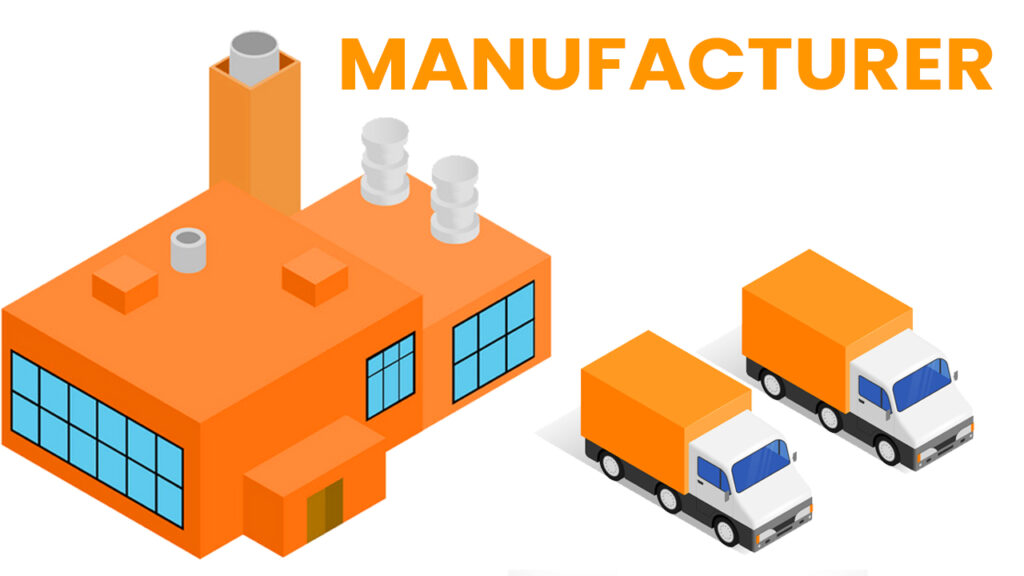
A crucial step in preparing for Amazon FBA is choosing the right manufacturer. Your entire business depends on the quality and reliability of this partnership—and Brian knew that from experience. After several product launches, Brian had learned that trusted recommendations beat cold outreach. For Good Cop Bad Cop, a fellow publisher referred him to a manufacturer in China who had delivered consistent quality on past board games. That referral alone saved time and reduced the risk of miscommunication or production failure.
Other Ways to Find Reliable Manufacturers
Not everyone has access to a network of industry veterans, but there are still great options for new sellers looking to build their first Amazon FBA product. Brian recommends these resources:
- Alibaba.com – Ideal for finding overseas manufacturers, especially in Asia. Be sure to filter by verified suppliers and read customer reviews.
- Thomasnet.com – Best for U.S.-based manufacturing if you want faster lead times and easier communication.
- Direct Google search – Often overlooked but effective. Try phrases like “custom [product] manufacturer USA” or “board game factory China.”
- Facebook groups and forums – Communities like Board Game Design Lab or Amazon FBA Reddit threads can offer real-world feedback and referrals.
Brian spent about $250 to produce samples and test the product. He then took these samples to game groups for feedback on components, usability, and instructions. That upfront work helped him improve the final product and boost retention once it launched on Amazon.
From Kickstarter to Amazon FBA
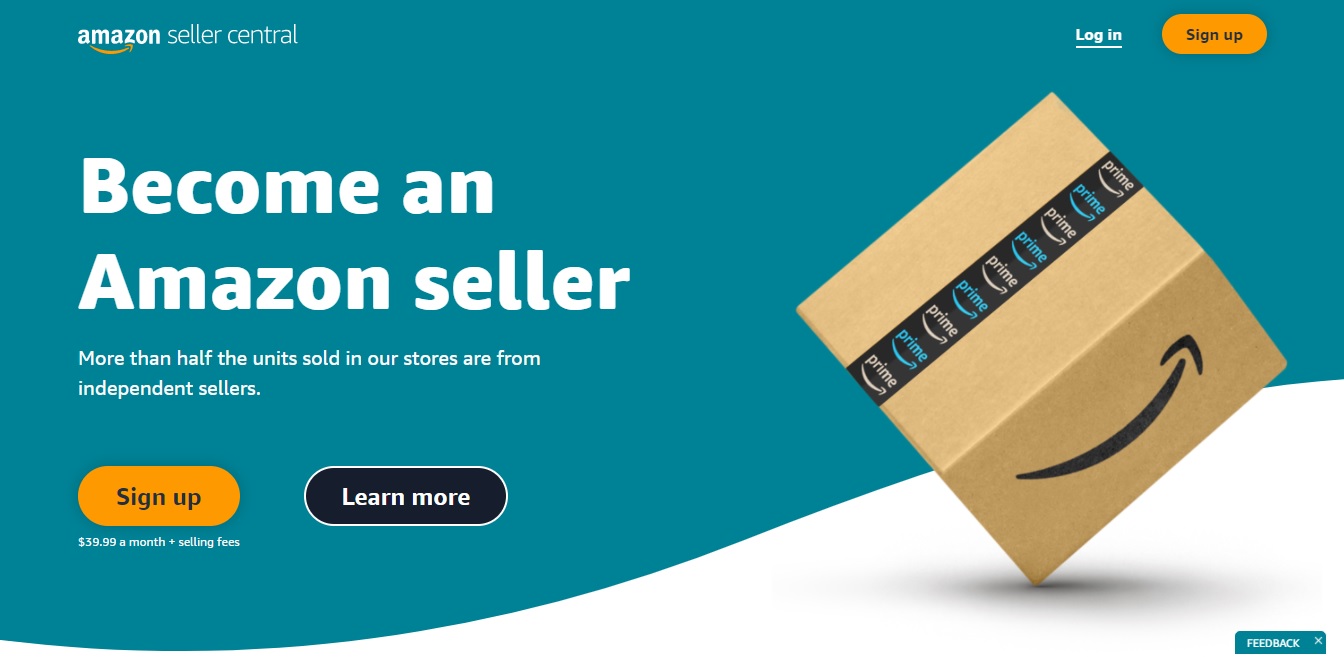
Once the Kickstarter campaign wrapped up, Brian needed a reliable platform for ongoing sales—and Amazon FBA was the perfect fit. With millions of active shoppers and a built-in fulfillment network, Amazon offered both reach and convenience. By transitioning from crowdfunding to Amazon FBA, Brian unlocked long-term growth potential. Kickstarter gave him the launch momentum, and Amazon allowed him to passively collect revenue month after month.
DIY Product Photography That Works
Instead of hiring a professional, Brian took his own product photos to save on startup costs. He followed Amazon’s image requirements carefully—using a clean background, good lighting, and multiple angles to highlight the game’s components. This proves that new sellers don’t need a massive budget to create a compelling, conversion-friendly listing.
Avoiding Barcode Mistakes with GS1
Brian learned the hard way that not all barcode providers are accepted by Amazon. Early in the process, he used a third-party service to purchase UPC codes, thinking it would be a cheaper alternative. But once his inventory arrived, Amazon flagged the barcodes as non-compliant, which led to unexpected relabeling fees and delays.
After this frustrating experience, he made the switch to GS1—the only barcode source officially recognized by Amazon. While it came at a slightly higher upfront cost, it saved him valuable time, eliminated compliance issues, and gave his product a more professional foundation for long-term success on Amazon FBA.
Choosing the Right Amazon Seller Plan

Rather than sticking with the Individual Seller account, Brian opted for Amazon’s Professional plan. While the Individual account has no monthly fee, it charges a per-sale transaction fee and offers limited features—making it better suited for casual or very low-volume sellers.
The Professional plan, on the other hand, unlocked powerful tools like bulk listing, advanced reporting, and greater control over inventory and pricing. For sellers aiming to move more than 40 units per month, it’s the smarter choice—enabling better scalability and a more streamlined path to growing a serious Amazon FBA business.
What Sales Look Like in Your First Year on Amazon FBA
Success on Amazon FBA isn’t always explosive—it’s often steady, gradual, and powered by long-term strategy. Brian’s first-year journey shows how consistent effort, great product design, and organic word-of-mouth can lead to reliable results, even without paid advertising.
Amazon FBA in the Early Months
In the first few months after launching on Amazon FBA, Brian began seeing regular sales come in. Without any PPC ads, those early sales were driven by the momentum of his Kickstarter campaign and the strong presentation of the game itself. Even with limited visibility, the product began generating profit thanks to low costs and Amazon handling fulfillment.
From month four onward, Brian focused on showcasing the game at events like Dice Tower West. Rather than relying on ad spend, he leaned into grassroots marketing—demoing the game in person and letting its quality speak for itself. These events helped boost awareness and sustained his Amazon FBA sales at a consistent pace.
Using Comic-Con to Drive Traffic
Later in the year, Brian exhibited at San Diego Comic-Con using a demo table. While he couldn’t sell directly from the table, he gave out promo cards with QR codes and discounts that led attendees to Amazon. This creative tactic drove traffic and helped maintain a healthy sales rhythm on the platform.
Amazon FBA Sales Spike
During the holiday season, Brian lowered the price of his older edition to make room for new inventory. This strategic move led to his strongest sales month yet, proving how powerful Amazon FBA can be when paired with seasonal promotions and smart inventory management.
By the end of the year, Brian had built a stable, profitable stream of income—all from one product and without running continuous ads. His experience proves that with the right launch strategy and commitment to product quality, Amazon FBA can turn even a single idea into a sustainable business.
Learn From These Real Amazon FBA Mistakes
Every Amazon FBA journey includes obstacles—but the smartest sellers treat mistakes as learning opportunities. Brian openly shared three major lessons from his experience so that others could avoid the same pitfalls.
Representation Matters in Product Design
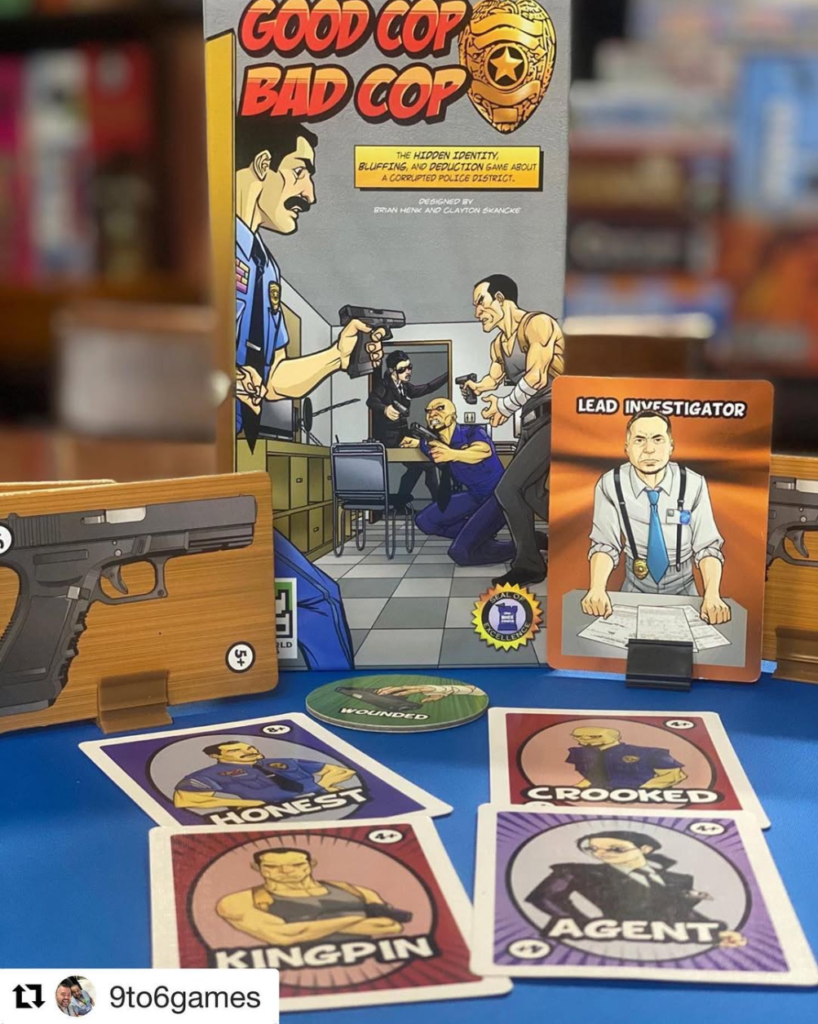
One misstep happened during a Kickstarter campaign when Brian allowed backers to submit their likenesses to be drawn into the game. While well-intentioned, most submissions came from white men. As a result, the game lacked diversity, which unintentionally limited its appeal.
For any product with character-based visuals, it’s important to consider representation from the start. Whether you’re designing packaging, branding, or product content, creating something that reflects your audience is essential—especially when building an inclusive Amazon FBA brand.
Don’t Route Shipments Through the Wrong Fulfillment Center
Brian tried sending inventory from a fulfillment center in China to Amazon’s warehouse. Unfortunately, the center wasn’t prepared for large-scale freight shipping. The result? Costly delays, relabeling issues, and a shipment that expired in Amazon’s system before delivery.
The lesson here is clear: If you’re using Amazon FBA, ship directly from your manufacturer. Avoid unnecessary middle steps unless the partner is specifically equipped to handle Amazon-bound freight. Also, only create your FBA shipment when your inventory is fully prepped and ready to go.
Licensing an IP Without a Strategy Is Risky
Brian also experimented with launching a game tied to a well-known movie license. But he didn’t have the rights to use the lead actor’s likeness, nor did he build a targeted fanbase ahead of the campaign. Despite the recognizable IP, the campaign underperformed—and the licensing costs couldn’t be recouped.
If you’re considering licensing a brand for your Amazon FBA product, think twice. IP deals come with strict contracts, high upfront costs, and little room for creative control. In most cases, building your own original brand is more sustainable—and profitable—in the long run.
How Organic Buzz Can Fuel Amazon FBA Sales
When you build a product people genuinely enjoy, they’ll do the marketing for you. That’s the philosophy Brian leaned into after his Kickstarter campaign. Without ongoing ad spend, he relied on gameplay, community sharing, and social engagement to drive sales—proving that word of mouth is still one of the most powerful forces on Amazon FBA.
Creating a Product That Sells Itself
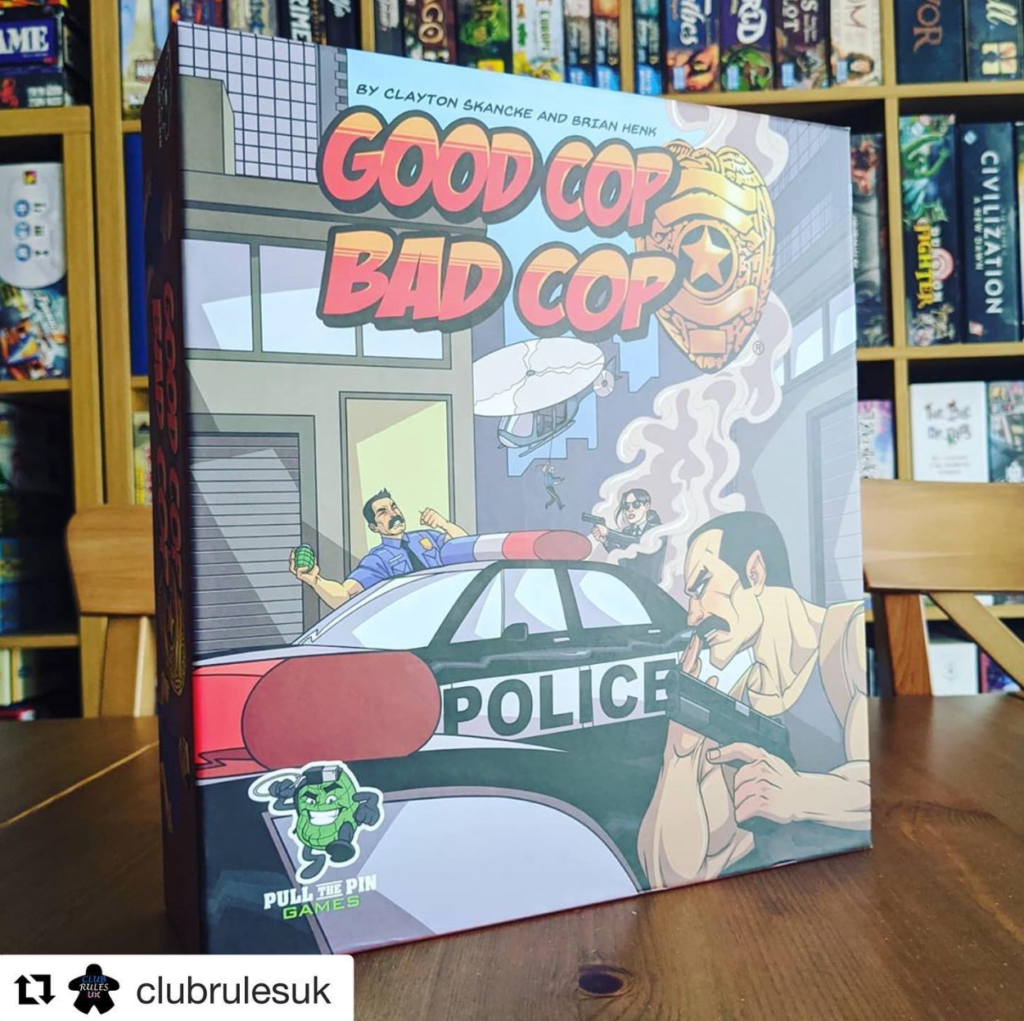
Brian knew from experience that people who had a good time playing Good Cop Bad Cop would talk about it. Since the game is designed for multiple players, each copy had the potential to introduce eight new people to the product. That’s powerful exposure without a marketing budget.
He also encouraged gameplay in public settings—like conventions or game nights—where other curious players could watch and ask about the game. This strategy created a ripple effect that continued to drive sales on Amazon FBA long after the initial launch.
Leveraging Social Proof and Backer Excitement
Once Kickstarter backers received their copies, they became part of the marketing engine. Many of them posted photos, shared feedback, or introduced the game to their communities. Because Amazon FBA listings benefit from increased traffic and reviews, this kind of buzz helped boost the product’s ranking and visibility organically.
Ultimately, Brian showed that when you build a product people love to talk about, it will continue to sell itself—even in a crowded marketplace like Amazon.
Combining Kickstarter and Amazon FBA for Long-Term Growth
Launching a product is one thing—but sustaining momentum is another. Brian’s strategy combined the launch power of Kickstarter with the stability of Amazon FBA, giving his board game a strong start and long-term sales potential. This hybrid approach allowed him to maximize both platforms without relying on one alone. Kickstarter funded the production, while Amazon FBA made it easy to fulfill orders, reach new customers, and maintain revenue over time.
Use Kickstarter to Launch With Impact
Brian poured energy, creativity, and budget into his Kickstarter campaign. It wasn’t just about raising money—it was about building hype, getting feedback, and creating a community around the product.
The early buzz gave his game legitimacy and visibility, which carried over to the Amazon FBA listing after the campaign ended. Backers helped spread the word, and their early engagement helped create long-term momentum.
Let Amazon FBA Handle the Rest
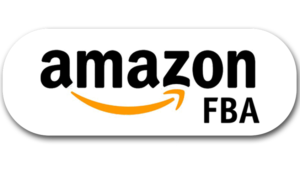
Once the product was live on Amazon, Brian didn’t need to run expensive ads or fulfill orders manually. Amazon FBA took care of it all—from warehousing and shipping to customer service and tracking. This allowed Brian and his team to shift their focus to creating the next product, while Amazon continued selling the current one. The flywheel was in motion: launch big with Kickstarter, then sustain sales with Amazon FBA. For creators looking to build real businesses—not just one-time campaigns—this combo is a proven path forward.
How You Can Launch Your Own Product—Without Taking Huge Risks
Brian’s journey proves that launching a successful Amazon FBA product doesn’t require a massive budget or a big team. What you do need is the right process, clear steps, and a way to reduce risk upfront. The good news? That process already exists—and it’s accessible to anyone.
By combining powerful product research tools, a carefully planned budget, and a launch strategy that involves real customer feedback, you can confidently turn your idea into a real business—without risking your savings. Instead of guessing what will sell, you’ll use data to guide your decisions, connect with a community to shape your product, and make smart investments that pay off faster on Amazon FBA.
Validate Your Idea Before You Invest

Before Brian spent thousands on manufacturing, he tested his idea with Kickstarter. You can do the same—or use tools like Helium 10 to assess demand directly on Amazon. These platforms reveal what customers are searching for, how competitive a niche is, and whether your product concept is viable.
This means you don’t need to rely on luck or intuition. Instead of pouring money into a product you hope will work, you can use actual search volume, keyword trends, and competitor analysis to confirm there’s real demand. By validating your idea upfront, you reduce the chances of launching a dud—and set yourself up for a profitable Amazon FBA business from the very beginning.
Leverage Expert Tools and Freelancers
You don’t have to do everything yourself to build a professional and profitable Amazon FBA listing. In fact, outsourcing parts of the process can save you time, avoid costly mistakes, and help your product stand out in a competitive marketplace.
Here are a few trusted platforms where you can hire experts:
- Fiverr – Great for quick tasks like logo design, keyword research, or listing copy.
- 99designs – Best for custom illustrations, packaging design, or branding contests.
- Upwork – Ideal for long-term projects, such as working with a product researcher or listing optimizer.
- FBA Creatives – A full-service Amazon FBA agency that can handle your product photography, listing creation, branding, and even packaging design.
Bringing in the right help early on can dramatically elevate your brand’s first impression. From professionally designed packaging to optimized copywriting and high-quality product photos, every detail contributes to how customers perceive your product. These expert touches not only make your listing more competitive but also increase your chances of ranking higher in search results, gaining customer trust, and converting browsers into buyers from the very first day your Amazon FBA listing goes live.
Follow a Proven Roadmap
One of the best ways to minimize risk is to follow a system that’s already worked for others. That’s why programs like the Passion Product Formula exist—to guide you through each step of launching on Amazon FBA, from research to revenue. With a proven roadmap, you can avoid the trial-and-error phase, stay focused, and build a business that grows over time.
The Passion Product Formula – Your Shortcut to Success
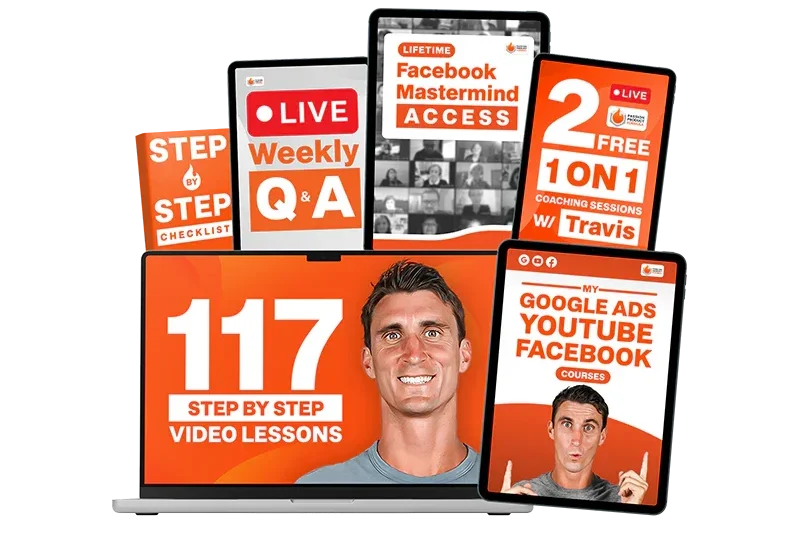
Launching a product on Amazon FBA can feel overwhelming—especially when you’re doing it for the first time. Between product research, branding, sourcing, listing optimization, and launch strategy, it’s easy to get lost or make costly mistakes. That’s exactly why the Passion Product Formula exists: to give you a proven, step-by-step roadmap for turning your idea into a profitable physical product. Instead of spending months piecing together free advice from random videos and blogs, you get everything in one place—organized in a way that’s simple, actionable, and beginner-friendly.
What’s Included in the Program
When you join the Passion Product Formula, you’ll get access to:
- 100+ step-by-step video lessons – covering everything from product research and supplier communication to listing creation and launch strategy.
- One-on-one mentorship – so you’re never stuck wondering what to do next.
- Live Q&A sessions – where you can ask questions and get direct feedback.
- A private community of sellers – who are building real Amazon FBA businesses just like you.
It’s designed for people who want to build a brand—not just flip random products. And it’s led by someone who’s done it themselves, multiple times, using the exact system he teaches.
Not Ready Yet? Start With the Free Course
If you’re still exploring whether Amazon FBA is right for you, there’s a completely free 10-hour course that breaks down the entire business model in simple terms. You’ll learn how Amazon FBA works, how to find your first product idea, and what it takes to get started—with no pressure and no upfront investment. Whether you’re ready to dive in or just testing the waters, there’s something here for you.
Turning Your Passion Into Profit
Brian’s journey is proof that launching a physical product doesn’t require a massive team or a marketing degree. What it takes is passion, persistence, and a clear, step-by-step strategy. He started with an idea he believed in, validated it with real customers, and used platforms like Kickstarter and Amazon FBA to bring it to life.
Yes, there were mistakes. Yes, there were unexpected costs and learning curves. But in the end, he built something real—something that continues to generate revenue, grow his brand, and create joy for thousands of players.
The same is possible for you!
You don’t need to invent something groundbreaking. You just need to create a product that solves a problem, brings people joy, or adds value to their life. With tools like Helium 10, support from creative freelancers, and a proven system like the Passion Product Formula, your idea can become a thriving Amazon FBA business. So if you’ve been waiting for the perfect moment—this is it. Start with one idea. Take one step. And let that momentum carry you forward.
Frequently Asked Questions (FAQs)
1. How much money do I need to start an Amazon FBA business?
It depends on your approach. While some sellers spend several thousand dollars, others get started with $1,000–$3,000 by using smart budgeting and doing more of the work themselves. Tools like the Passion Product Formula help you invest only where it matters most.
2. What is Amazon FBA and how does it work?
Amazon FBA (Fulfillment by Amazon) is a program where Amazon stores, picks, packs, and ships your products for you. They also handle customer service and returns, allowing you to focus on building your brand and scaling your sales.
3. Can I launch a product without using Kickstarter?
Yes. Kickstarter is a great validation tool, but it’s not required. Many sellers go straight to Amazon after validating demand using tools like Helium 10 and launching with pre-orders or small test batches.
4. Do I need a trademark to sell on Amazon FBA?
No, but it’s highly recommended—especially if you want access to Brand Registry. That gives you added protection from counterfeiters and unlocks enhanced listing tools and A+ content.
5. How long does it take to see results with Amazon FBA?
Most sellers start seeing initial sales within the first 1–3 months, but meaningful profit often builds over 3–6 months. With the right launch strategy, momentum builds naturally over time.
6. What if I don’t have a product idea yet?
That’s totally fine. The Passion Product Formula helps you find and validate your product idea using data, trends, and your personal interests—so you can build something you’re actually excited about.
7. Can I sell on Amazon FBA while working a full-time job?
Absolutely. Many sellers start their businesses as side projects. Since Amazon handles most of the fulfillment and customer service, it’s a manageable model for busy schedules.


